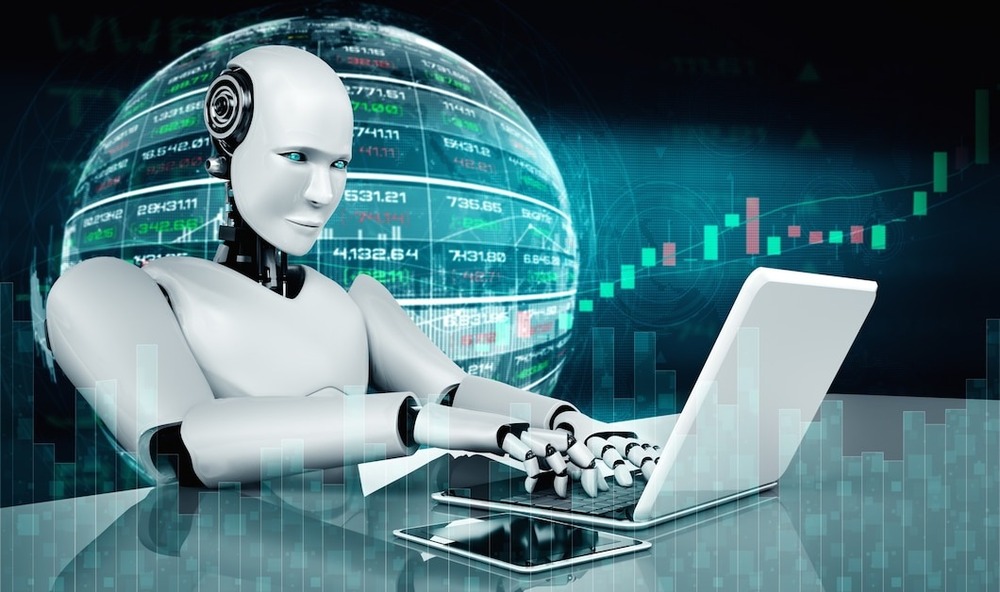In the rapidly evolving world of finance, technology has become an indispensable ally for investors. One of the most exciting advancements in recent years is the rise of trading robots, also known as algorithmic trading systems or automated trading systems. These sophisticated tools can analyze vast amounts of data, execute trades at lightning speed, and help investors make informed decisions. But how can you effectively integrate trading robots into your overall investment strategy? Let's explore this topic in depth, supported by rich statistics and clear tables.

Understanding Trading Robots
Trading robots are software programs that use algorithms to analyze market data and execute trades on behalf of investors. They can operate 24/7, making them ideal for capitalizing on market opportunities that may arise outside of regular trading hours. According to a report by Grand View Research, the global algorithmic trading market is expected to reach $18.8 billion by 2026, growing at a CAGR of 11.1% from 2019 to 2026. 📈
Benefits of Using Trading Robots
- Speed and Efficiency: Trading robots can process information and execute trades in milliseconds, far faster than any human trader.
- Emotionless Trading: Robots operate based on data and algorithms, eliminating emotional decision-making that can lead to costly mistakes.
- Backtesting Capabilities: Many trading robots allow users to backtest their strategies using historical data, helping to refine and optimize trading approaches.
Key Statistics on Trading Robots
To better understand the impact of trading robots, let's take a look at some key statistics:
| Statistic | Value |
|---|---|
| Percentage of trades executed by algorithms | 60-73% (U.S. stock market) |
| Average annual return of algorithmic trading | 10-15% |
| Growth rate of algorithmic trading market | 11.1% CAGR (2019-2026) |
| Percentage of traders using automated systems | 30% |
These statistics highlight the growing reliance on algorithmic trading in the financial markets. As more investors recognize the benefits, the adoption of trading robots is likely to increase.
Choosing the Right Trading Robot
When integrating trading robots into your investment strategy, it's crucial to choose the right one. Here are some factors to consider:
- Performance History: Look for robots with a proven track record of success. Many platforms provide performance metrics that can help you assess their effectiveness.
- Customization Options: Some trading robots allow for customization, enabling you to tailor strategies to your specific investment goals.
- User Reviews: Check online reviews and forums to gauge the experiences of other users. Websites like Investopedia and Forex Peace Army can provide valuable insights.
Integrating Trading Robots into Your Strategy
Once you've selected a trading robot, the next step is to integrate it into your overall investment strategy. Here are some tips to help you do this effectively:
Diversification
Using trading robots can enhance your diversification strategy. By employing multiple robots that focus on different asset classes or trading strategies, you can spread risk and potentially increase returns. Here's a simple table illustrating how diversification can work with trading robots:
| Asset Class | Trading Robot 1 | Trading Robot 2 | Trading Robot 3 |
|---|---|---|---|
| Stocks | 📈 15% return | 📉 5% return | 📈 10% return |
| Forex | 📉 3% return | 📈 12% return | 📈 8% return |
| Commodities | 📈 20% return | 📉 2% return | 📈 15% return |
Risk Management
Incorporating risk management strategies is essential when using trading robots. Set clear parameters for stop-loss and take-profit levels to protect your investments. A well-defined risk management plan can help mitigate potential losses and ensure long-term success.
Continuous Monitoring and Adjustment
While trading robots can operate autonomously, it's important to monitor their performance regularly. Market conditions can change rapidly, and what works today may not work tomorrow. Adjust your strategies and settings as needed to adapt to evolving market dynamics.
The Future of Trading Robots
As technology continues to advance, the capabilities of trading robots are expected to improve significantly. Machine learning and artificial intelligence are becoming increasingly integrated into trading algorithms, allowing for more sophisticated analysis and decision-making. According to a report by MarketsandMarkets, the AI in the fintech market is projected to grow from $7.91 billion in 2020 to $26.67 billion by 2025, at a CAGR of 28.6%. 🤖
Conclusion
Integrating trading robots into your overall investment strategy can provide numerous benefits, from increased efficiency to enhanced decision-making. By understanding the advantages, choosing the right tools, and implementing effective strategies, you can harness the power of technology to improve your investment outcomes. As the landscape of trading continues to evolve, staying informed and adaptable will be key to your success.
Embrace the future of investing with trading robots, and watch your portfolio thrive! 🚀




